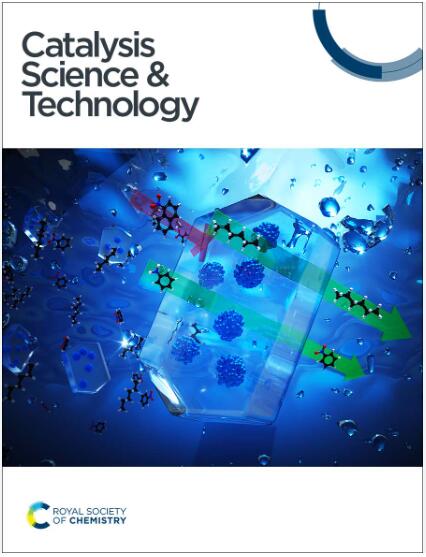Ultrasmall RuO2/CoFe2O4 nanoparticles with robust interfacial interactions for the enhanced acidic oxygen evolution reaction†
IF 4.2
3区 化学
Q2 CHEMISTRY, PHYSICAL
引用次数: 0
Abstract
The acidic stability of RuO2-based electrocatalysts remains a critical hurdle for proton exchange membrane electrolyzers due to ruthenium leaching. Here, we report an ultrasmall RuO2/CoFe2O4 (RFC) catalyst with robust interfacial interactions, synthesized via an adsorption–pyrolysis method. The RFC catalyst demonstrates an exceptionally low overpotential of 191 mV and outstanding stability, retaining its performance for over 100 hours in 0.5 M H2SO4. Experimental analyses indicate that the robust interfacial interactions between RuO2 and CoFe2O4 facilitate efficient charge transfer, significantly enhancing the performance of the oxygen evolution reaction (OER). After the stability test, XRD, Raman, and TEM characterization confirmed that the RFC catalyst maintains its crystal structure and morphology, indicating excellent durability. These findings highlight the potential of RFC catalysts for sustainable hydrogen production and provide a novel approach to the design of advanced electrocatalysts through strategic interfacial engineering, paving the way for improved stability and performance in acidic OER applications.

具有强大界面相互作用的超小型 RuO2/CoFe2O4 纳米粒子用于增强酸性氧进化反应†。
由于钌的浸出,基于 RuO2 的电催化剂的酸稳定性仍然是质子交换膜电解器的一个关键障碍。在此,我们报告了一种通过吸附-热解方法合成的具有强大界面相互作用的超小型 RuO2/CoFe2O4 (RFC) 催化剂。这种 RFC 催化剂具有 191 mV 的超低过电位和出色的稳定性,可在 0.5 M H2SO4 中保持性能超过 100 小时。实验分析表明,RuO2 和 CoFe2O4 之间强大的界面相互作用促进了有效的电荷转移,显著提高了氧进化反应(OER)的性能。稳定性测试后,XRD、拉曼和 TEM 表征证实 RFC 催化剂保持了其晶体结构和形态,表明其具有出色的耐久性。这些发现凸显了 RFC 催化剂在可持续制氢方面的潜力,并为通过战略性界面工程设计先进电催化剂提供了一种新方法,为提高酸性 OER 应用的稳定性和性能铺平了道路。
本文章由计算机程序翻译,如有差异,请以英文原文为准。
求助全文
约1分钟内获得全文
求助全文
来源期刊

Catalysis Science & Technology
CHEMISTRY, PHYSICAL-
CiteScore
8.70
自引率
6.00%
发文量
587
审稿时长
1.5 months
期刊介绍:
A multidisciplinary journal focusing on cutting edge research across all fundamental science and technological aspects of catalysis.
Editor-in-chief: Bert Weckhuysen
Impact factor: 5.0
Time to first decision (peer reviewed only): 31 days
 求助内容:
求助内容: 应助结果提醒方式:
应助结果提醒方式:


